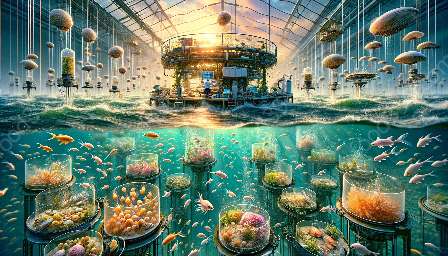Shellfish larval development is a topic of great interest in the fields of shellfish biology, aquaculture, and seafood science. Understanding the intricate process of shellfish larval development is crucial for the successful cultivation and sustainable management of shellfish populations.
The Significance of Shellfish Larval Development
Shellfish, including oysters, mussels, clams, and scallops, undergo a complex life cycle that begins with larval development. The larval stages of shellfish play a critical role in their population dynamics, dispersal, and settlement. Therefore, studying shellfish larval development is essential for comprehending the ecology and biology of these commercially important species.
Stages of Shellfish Larval Development
The larval development of shellfish involves several distinct stages, each with its unique characteristics and requirements. These stages include the trochophore, veliger, and pediveliger, each representing important milestones in the transformation of larvae into juvenile shellfish capable of settlement and metamorphosis.
Trochophore Stage
The trochophore stage is the earliest developmental phase of shellfish larvae. During this stage, the larvae exhibit a characteristic ciliated band called the prototroch, which aids in their locomotion and feeding. Trochophore larvae are typically free-swimming and feed on phytoplankton as they drift in the water column.
Veliger Stage
In the veliger stage, shellfish larvae develop a velum, a specialized feeding structure that enables them to feed on suspended particles in the water. Veliger larvae also begin to develop their characteristic shell, which starts as a translucent protoconch, eventually developing into the recognizable shell of the adult shellfish.
Pediveliger Stage
During the pediveliger stage, the larvae undergo further development of their shell and other structures in preparation for settlement. Pediveliger larvae exhibit behaviors associated with locating and settling in suitable substrate, marking the transition from a planktonic, free-swimming larva to a benthic, sessile juvenile shellfish.
Factors Influencing Shellfish Larval Development
The successful development of shellfish larvae is influenced by various environmental factors, including water temperature, salinity, food availability, and the presence of predators. Understanding how these factors impact larval development is crucial for optimizing hatchery conditions and maximizing larval survival, which are essential for successful shellfish aquaculture and population enhancement efforts.
Implications for the Seafood Industry
Shellfish larval development has significant implications for the seafood industry, particularly in the context of aquaculture and wild stock enhancement. By gaining a deeper understanding of the factors and processes that govern larval development, aquaculturists and conservationists can implement strategies to enhance larval survival, settle more juveniles, and ultimately contribute to the sustainable production of shellfish for human consumption.
Conclusion
Shellfish larval development is a multifaceted and essential aspect of shellfish biology, aquaculture, and seafood science. By delving into the intricacies of shellfish larval development, we can gain valuable insights into the ecology, biology, and sustainable management of these valuable marine resources.

